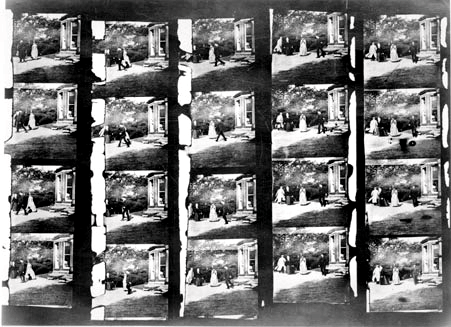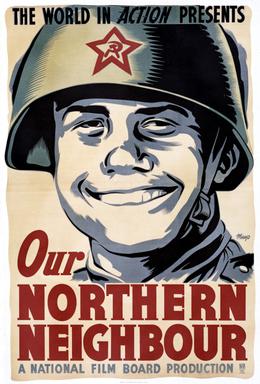Edward Muybridge was the first man to make significant work in creating motion pictures. On June 19th, 1878 he produced an 11- frame clip shot using 12 separate cameras to film a man riding a horse. This was filmed at Palo Alto Stock Farm, which would eventually become part of Stanford University. Why a horse? This is because in 1872, many debated whether all four of a horse’s feet were off the ground at the same time when galloping. The then-governor of California, who was also a racehorse owner, Leland Stanford paid $2,000 to Muybridge to prove it. This was a big investment, $2,000 dollars in 1872 would have been equivalent to a little over 50,000 dollars today.
In 1879, Muybridge figured out a way to view his galloping horse images in sequence at high speed. He created a circular metal housing machine with glass slots. Each slot held separate images that, when cranked by hand, would create the illusion of a galloping horse. He named this the zoopraxiscope and this invention was one of the most impactful steps towards the development of cinema.
On October 14th, 1888, the first motion picture film was shot, called The Roundhay Garden Scene. This two second video showed four people walking silently in a garden. It was shot in England by a French artist and inventor, Louis Le Prince. He is known as the first person to officially use cameras to create motion pictures and the Roundhay Garden Scene is significant because it’s believed to be the first surviving film captured.
The development of motion pictures continued. Two men who were extremely influential, William Dickson and Thomas Edison in connecting sound with the moving pictures. In the early 1890s, Dickson worked with Edison’s invention to create the Kinetophone which allowed sound to accompany the moving images. In 1891, Edison and his team filed a patent for both the Kinetograph (camera) and Kinetoscope (viewer). Despite this advance, the downside of this device was it was only viewable by one person at a time
Between 1900 and 1920, a number of significant advancements in film and sound technology were made creating movies closer to what we think of today. Initially, they were black and white silent films with subtitles and music was often played live at a theater to accompany the movie. Then, in 1927, the first movie with sound (The Jazz Singer) was released. While some early films were colored by hand, eventually technology was created so that the actual movie would be filmed in color.
Attendance at the movies soared. By the 1920s, weekly movie attendance was nearly 100 million tickets for a U.S. population of approximately 120 million. In other words, most people went to see a movie EVERY week. This shows the impact that movies could have on the culture.
As films became more sophisticated, they began to address more substantive topics, which we continue to see today. Some of these topics would reflect issues in society. One early film that is famous for using modern filming techniques is controversial today because it glorified the racist organization, the Ku Klux Klan.
It became a powerful way to reach people across the country and across economic and racial lines. Going to the movies became a regular activity long before television was invented.
Cinema became a powerful way to reach people across the country and across economic and racial lines. Going to the movies became a regular activity long before television was invented. The primarily goal of most films such as the Wizard of Oz (1939) was to entertain.

At times, films were also used as propaganda to influence people’s perceptions and beliefs.
Films were used as satire to make fun of those in power.
This is an example of Charlie Chaplin making fun of Hitler in The Great Dictator (1940).
More recently, films have addressed social issues such as when Tom Hanks in the movie Philadelphia (1993) addressed the AIDS epidemic.
In short, motion pictures have had a huge impact on the world today by influencing different aspects of culture, society, and communication. Movies have provided:
- Entertainment
- Cultural engagement
- Political influence/News
- Shared experiences
- An education tool
Today, the film industry has a huge financial impact on our economy, paying over $186 billion in wages annually. More importantly, films -whether in cinemas or viewed from home- continue to be a powerful way to tell stories that have a major influence on our culture.






_poster.jpg)




No comments:
Post a Comment